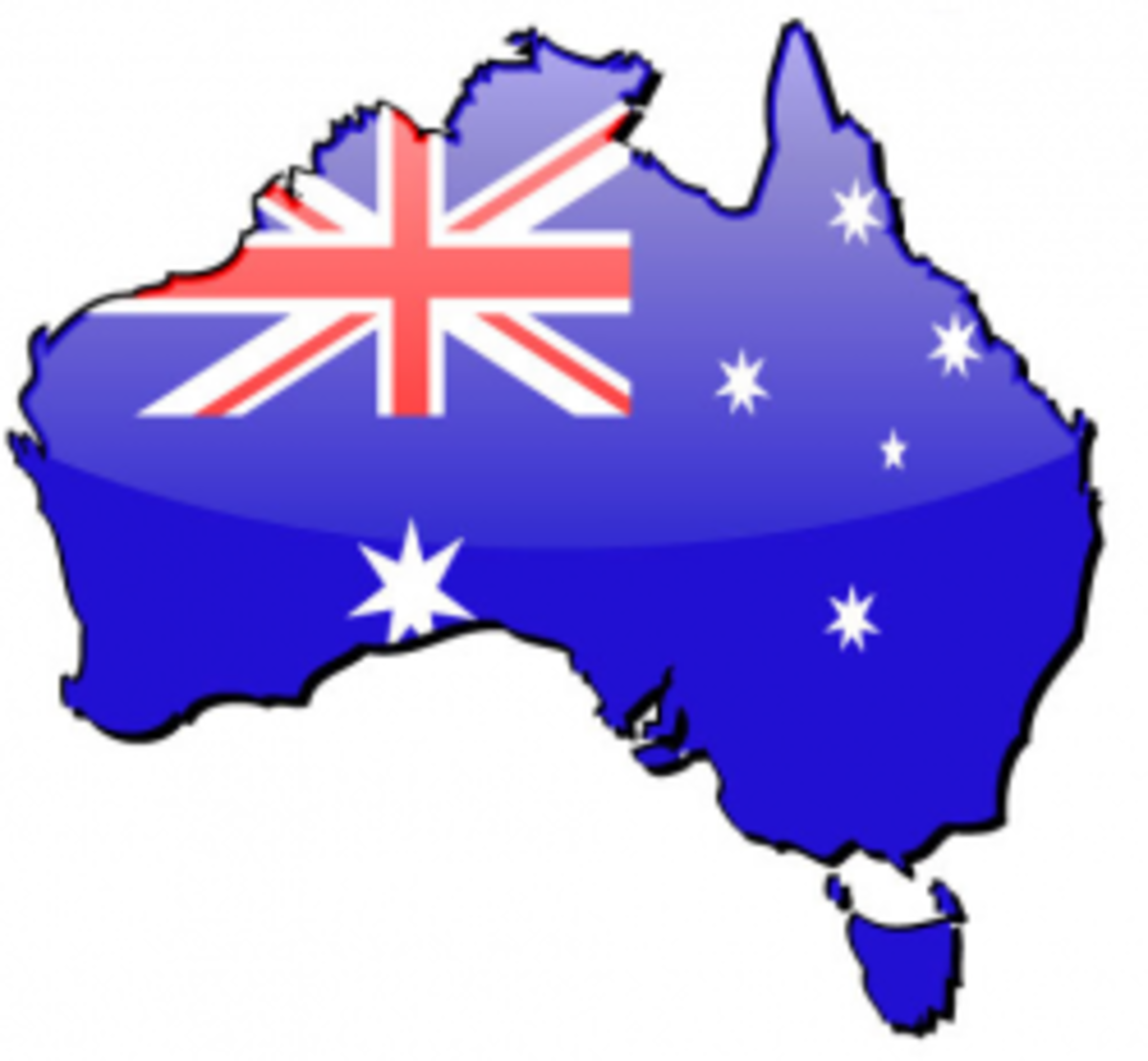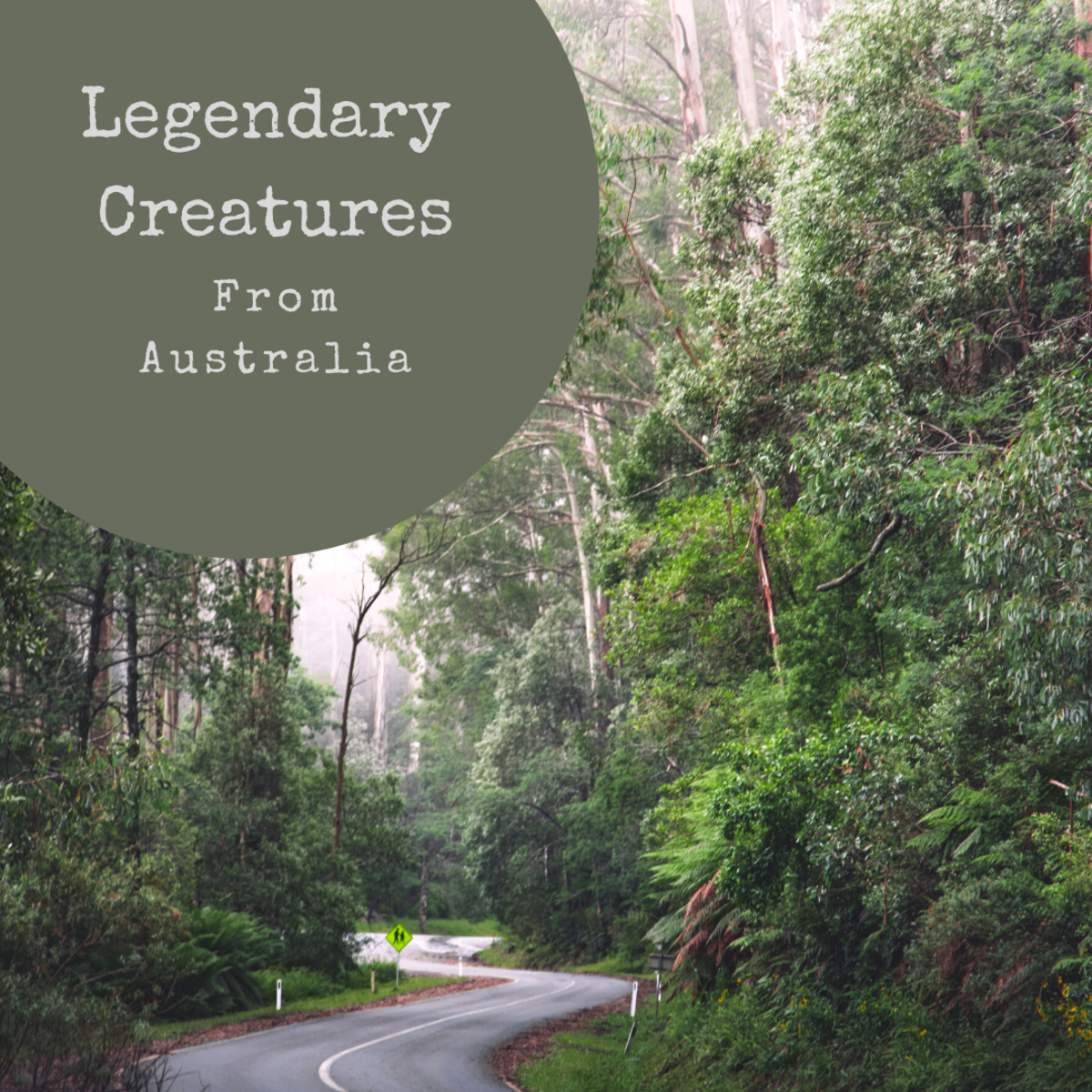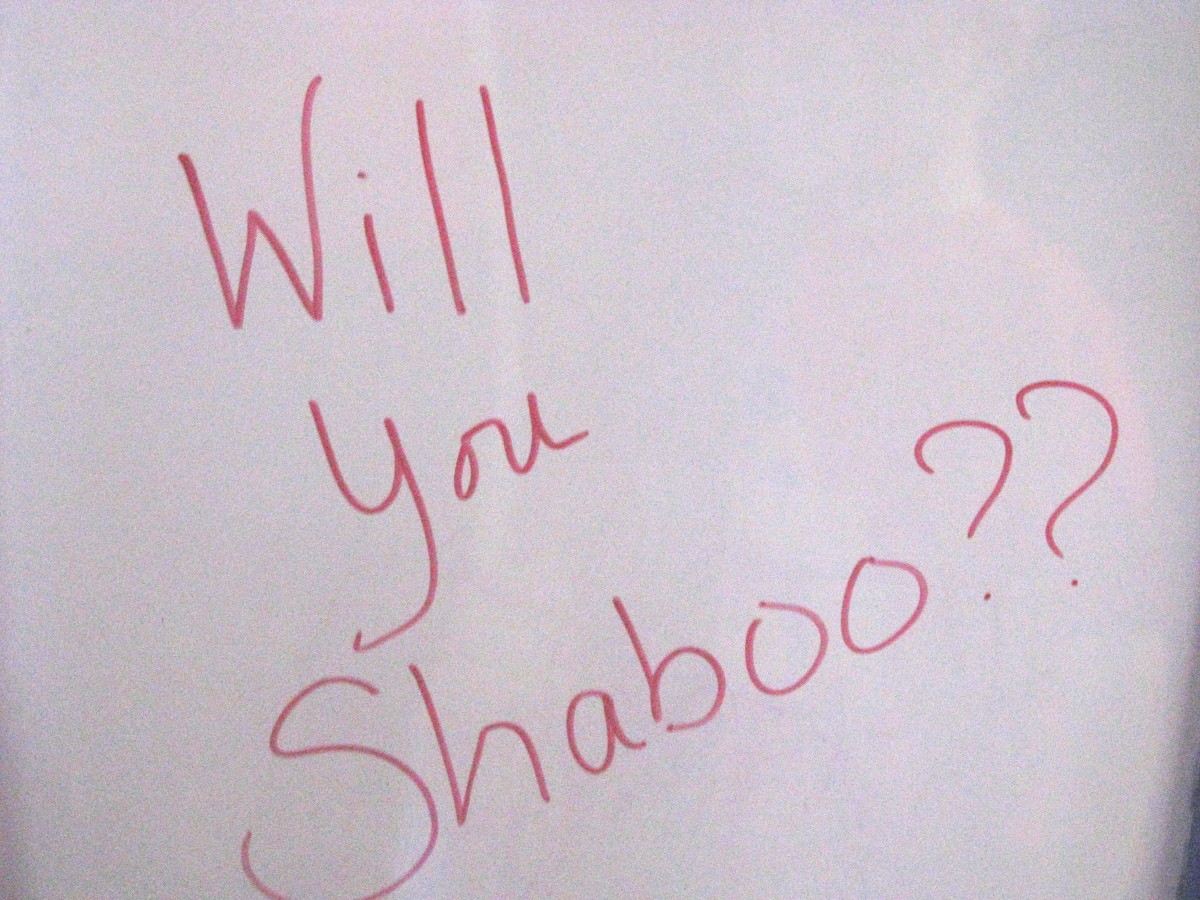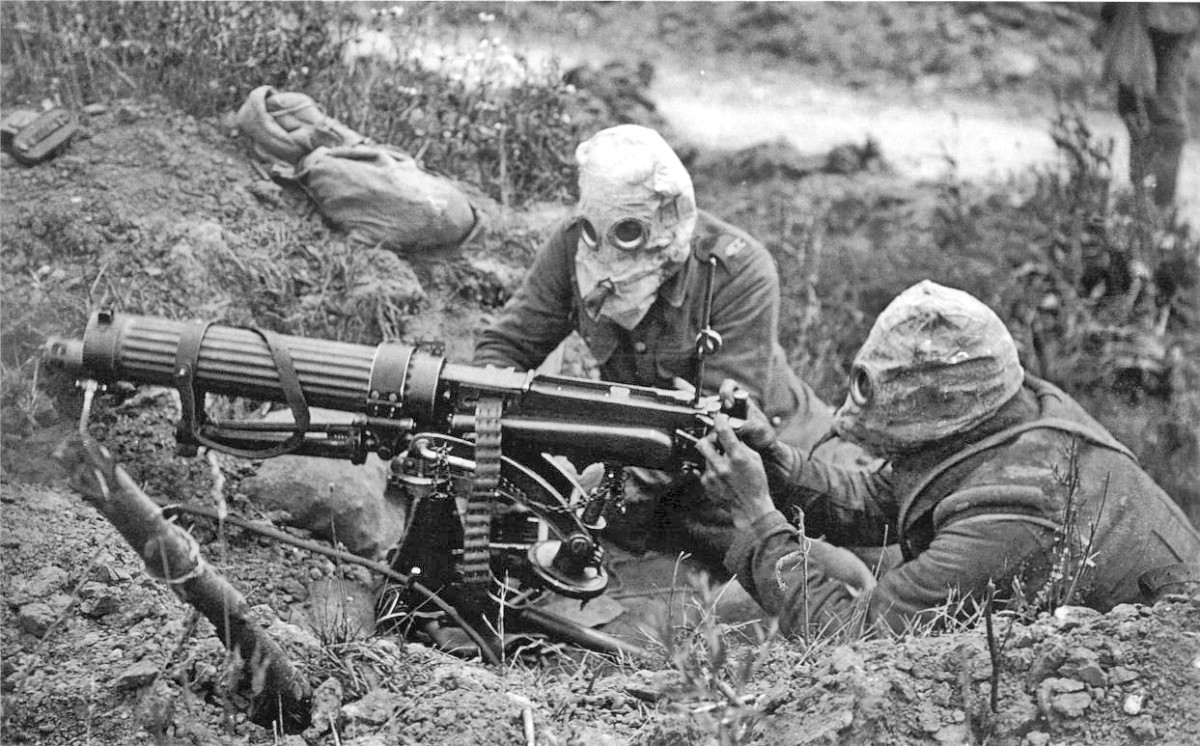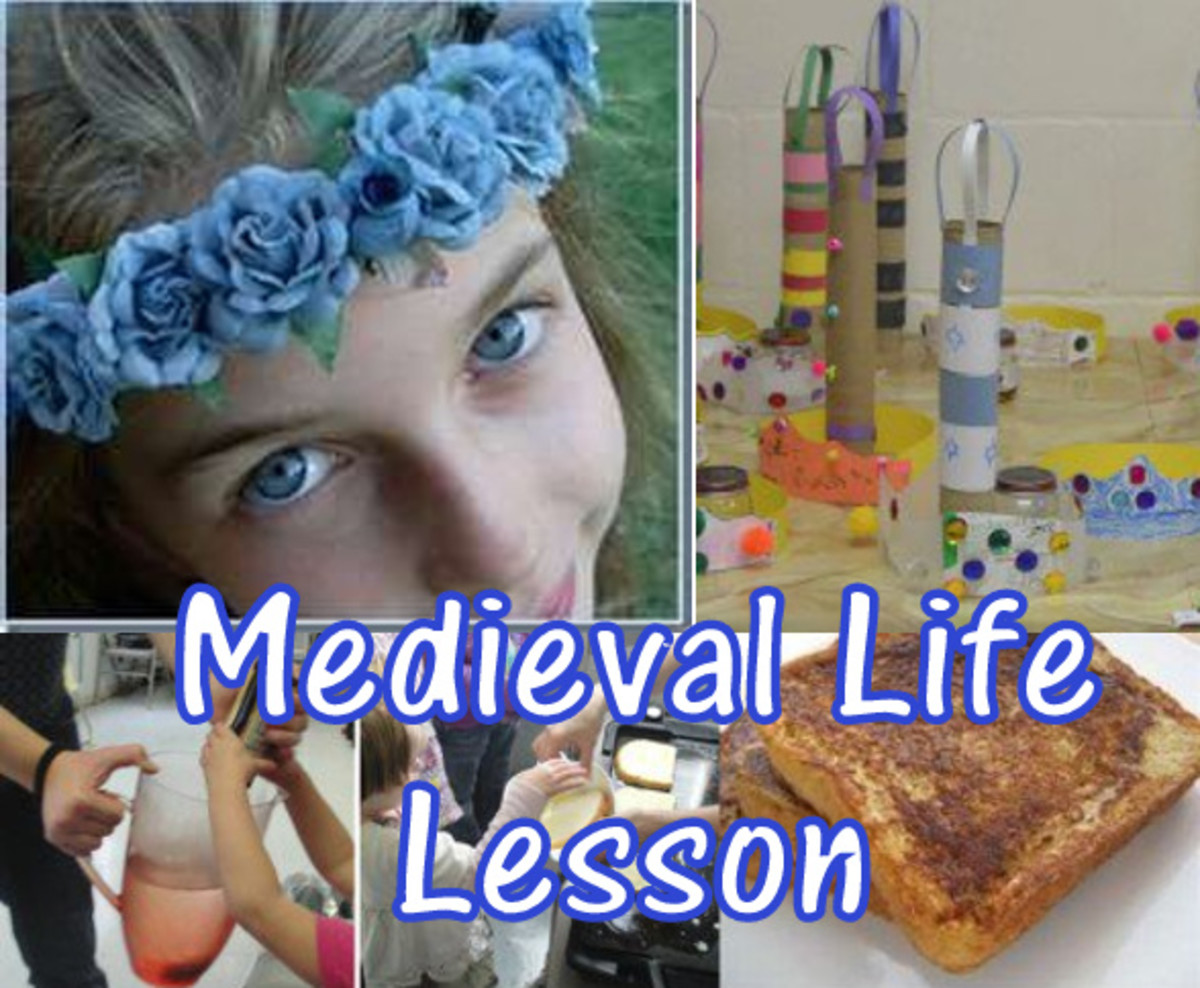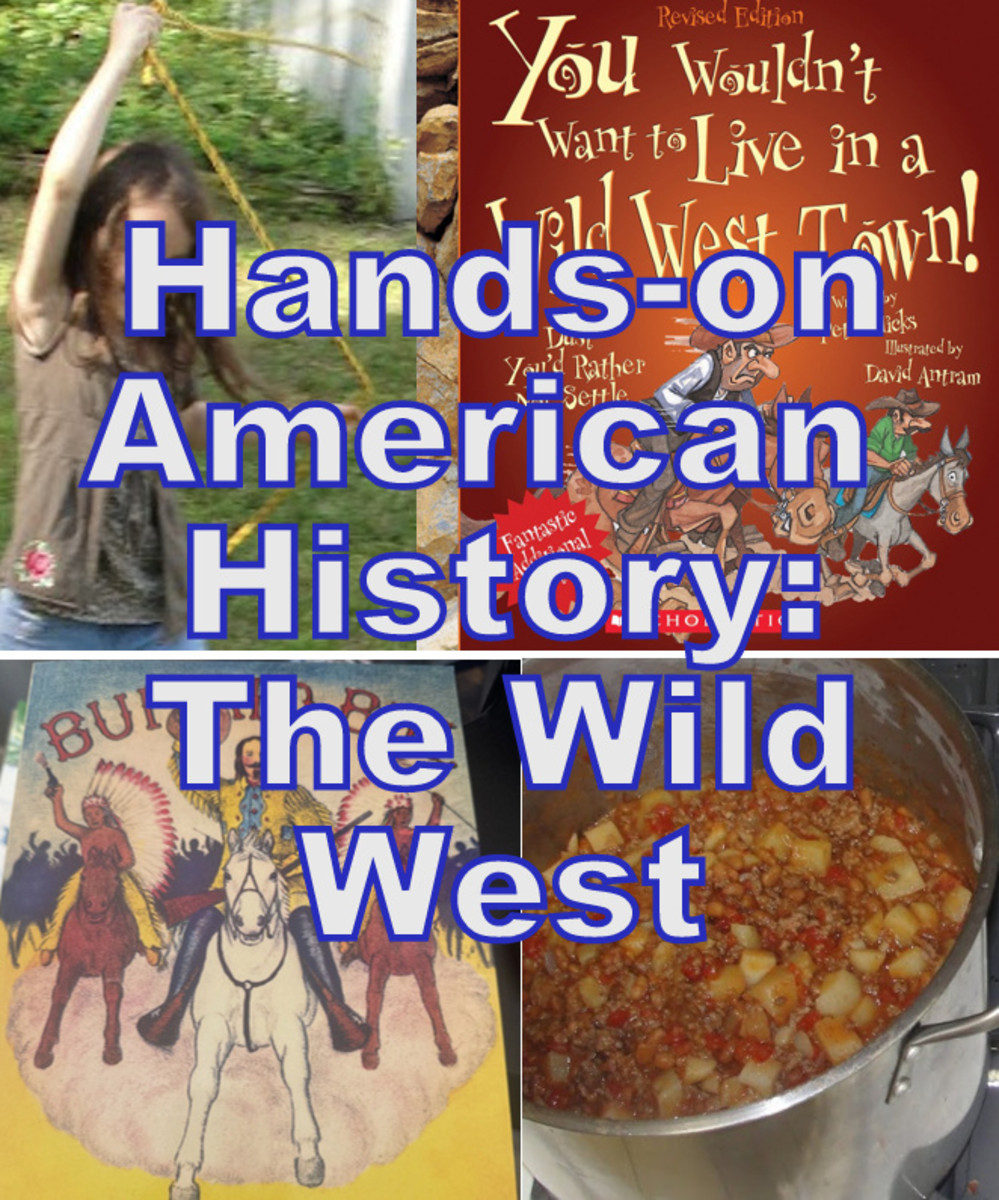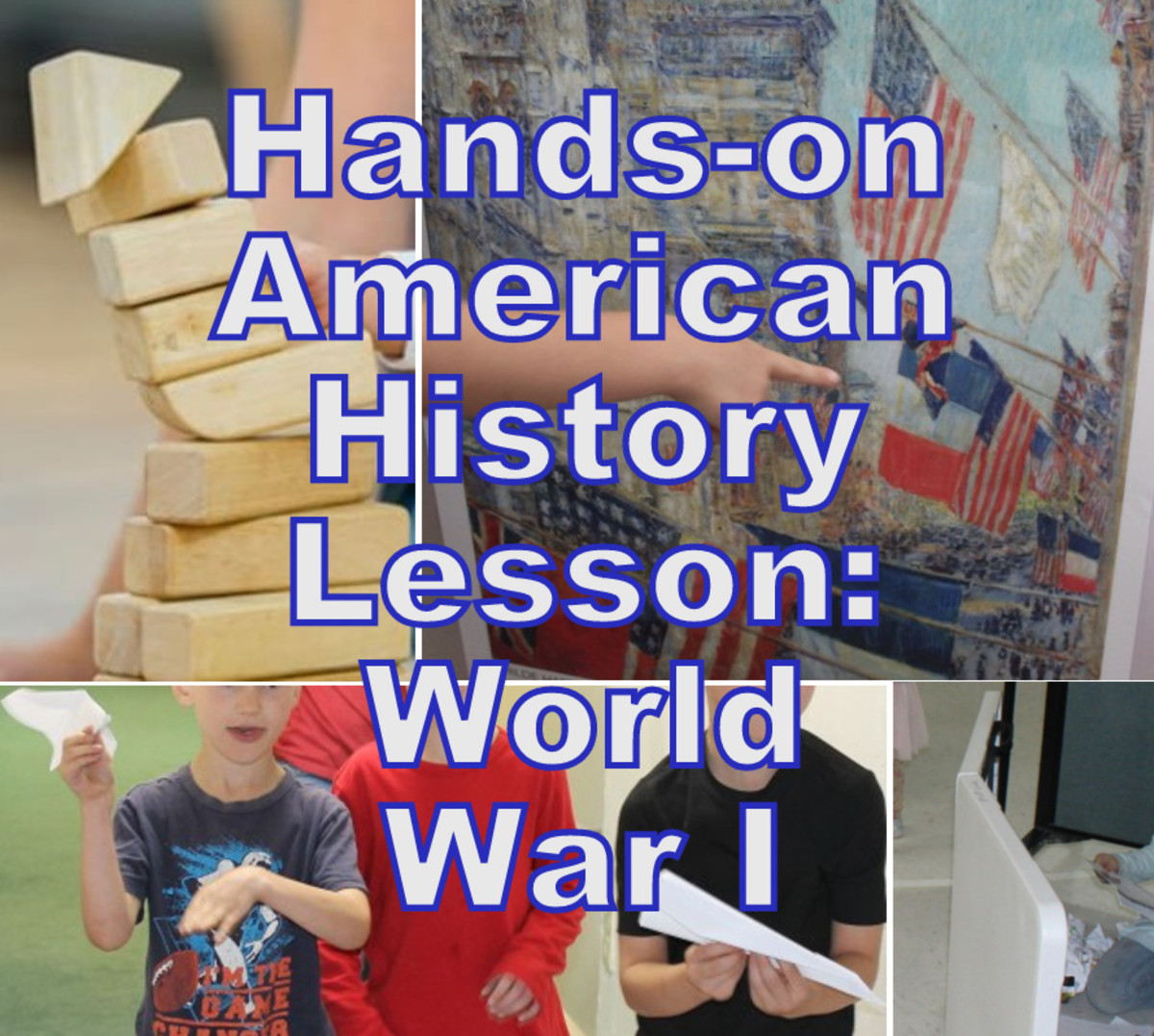- HubPages»
- Education and Science»
- Teaching»
- Lesson Plans
Australia Unit for 6th Grade
Awesome Australia!
This integrated unit on Australia will address content areas and multiple intelligences while focusing on facts about Australia, including the geography, biomes, animals, aboriginals, modern culture, currency, and the arts.
“Being there” experience – the zoo. Other possibility: The Museum of Art to see Aboriginal art work.
*Note: The students should be put into learning clubs for the entirety of the unit.
Day 1: The Land Down Under
Anticipatory Set: Ask students “Have you ever heard of the land down under?”
Learning Objectives -
Knowledge:
The student will learn and describe the major physical characteristics of Australia.
The student will learn the name and location of Australia, its states, and its major cities.
The student will observe the differences of political, physical, and topographical maps.
Skills:
The student will create a political map of Australia, representing all the states and major cities.
The student will create a topographical map (salt and flour) of Australia.
Dispositions:
Students will appreciate each other’s work by sharing their maps with their classmates.
Materials: large map of Australia, outline maps of Australia (one for each student and a transparency version), crayons or colored pencils, salt and flour mixture, cardboard, paint, hairspray.
Direct Instruction: Introduce Australia to the students. Teach about where Australia is located and the reason it is called the land down under. Talk about major states, cities, and important bodies of water.
Modeling: Using an overhead outline map of Australia, go over the states and major cities. Fill in all the states and cities and label them on the map.
Guided Practice: Have the students take their outline map, draw in the states, and label the major cities. Then, using map examples or an atlas, have the students work with their learning club to add any special characteristics like: rivers, lakes, desert areas, etc. using their colored pencils and crayons.
Independent Practice: Students will make a salt and flour map that is topographical. Each student will draw an outline of Australia on a piece of cardboard. They will then take the mixture and fill in the outline, making the correct topographical features (using a picture of a map as an example). After the map is finished drying, they will paint the correct colors for the features.
Salt and Flour Recipe
1. Use a cup of flour and half cup of salt.
2. Add enough water to make the mixture gooey.
3. If the mixture is too liquid it won’t work (consistency of thick glue).
4. It is important to mix the salt, flour, and water well.
*Note: These maps will take anywhere from 2-5 days to dry depending on the weather (temperature, humidity, etc.). Also, spray hairspray on the maps when the mixture is drying to keep insects away.
Adaptations:
ENL: Translate any important words like: state, country, city, map, and any other important words that will be used into their native tongue.
Early Finishers: Early finishers will be encouraged to look through a collection of books about Australia that will be available in the classroom. They may also help any other students who need assistance.
Special Needs: For independent practice, have the student work with a partner or a parent volunteer.
Re-teaching: Work with small groups or individual students who need help.
Closure: Students will share the maps they have made with their classmates (2-5 days later ).
Assessment: Students will be assessed on their finished map through a rubric.
Multiple Intelligences Addressed: spatial, intrapersonal, and bodily-kinesthetic
Content Areas: Social Studies, Art
Day 2: Animals and Habitats of Australia
Anticipatory Set: Have the students draw a picture of one animal they can name that comes from Australia.
Learning Objectives –
Knowledge:
The student will learn the main biomes (tropical, savanna, and desert) represented in Australia and the animals that live in them.
Skills:
The students will use a variety of books and other resources to find information on biomes and the animals that live in them.
The student will write a few paragraphs explaining their view of the animals in the zoo and how their habitats represent the things they need to survive.
Dispositions:
Students will show respect to the animals and workers at the zoo and appreciate the view points of other classmates.
Materials: a collection of books about Australia and its animals (or access to a library), worksheet for zoo project, paper, pencil.
Direct instruction: Teach about the three major biomes in Australia and show where they are located on the map. Mention the main characteristics of each.
Modeling: Choose one popular Australian animal (Ex: Kangaroo). List the main characteristics of the animal, the biome in which it lives, and the reasons why this animal survives there.
Guided practice: Assign each learning club a biome. Using the books available, have each group list the main characteristics of the biome, the most popular animals that live there, and the reasons why each animal can survive best in this kind of area.
*Lesson continued on next day.
Day 3: Off to the Zoo We Go!
*Continuation of day 2 lesson.
Independent practice: Students will take a trip to the local zoo. While at the zoo, each learning club will take their list of animals and biome characteristics. They will visit the main animals of their biome at the zoo and compare the condition of the zoo habitat with the ones they would have in Australia. They must determine whether the zoo environment is appropriate for the animal in question.
Adaptations:
ENL: Translate any key words into their native tongue and use pictures of the animals for reference. If possible, have them work with a peer that speaks their tongue or with a parent.
Early Finishers: Encourage the student to study other biomes or to explore the resource books about Australia.
Special Needs: Provide visuals for those who have vocabulary issues. Also, encourage the student to ask questions and participate as much as possible.
Re-teaching: One on one time with the teacher.
Closure: Each group will present one animal to the class, talk about its natural habitat, and explain the differences they saw at the zoo environment.
Assessment: Each group will write a few paragraphs explaining what they think about the zoo, and if they believe the animals have the correct habitat. If they do not believe so, then they will tell what can be changed to improve their habitat for them. The groups will turn these in for assessment. They will be checked for accurate habitat and animal information and whether they supported their claims or not.
Multiple Intelligences Addressed: linguistic, logic/mathematical, naturalist, intrapersonal
Content Areas: Science, Language Arts
Day 4: The First Australians
Anticipatory Set: Read the book “Aboriginal Peoples of Australia” by Anne Bartlett to the class.
Learning Objectives:
Knowledge:
The students will learn about Aboriginal people in Australia through a book.
The students will learn why Aboriginal Australians are important and how dance reflects their culture.
Skills:
The students will make up and perform their own aboriginal dances.
Dispositions:
Students will show respect for one another by paying attention to each group’s dance.
Materials: “Aboriginal People of Australia” by Anne Bartlett, audio recording of aboriginal music, pictures of dancing.
Direct instruction: Introduce the students to the Aboriginal people. Explain that they are much like our Native Americans because they were also the first people to ever live in Australia. Tell a little about their history and what they do in Australia today.
Modeling: Tell the students about Aboriginal dance, specifically dance for hunting season. Explain that their dances for this season resemble charades (They represent an animal they will hunt, such as a dingo.). Show pictures of dances. Do one example of a dance for the students to see.
Guided practice: Teach the previous dance to the students and do this together with some aboriginal music. Then, ask the students if they can think of another way of representing this animal and do their dance suggestions together as a class.
Independent practice: Have the students name some animals they think that Aboriginals would hunt (They can use examples from the story.). Assign each group an animal. The groups will make up their own dance and perform in front of the class.
Adaptations:
ENL: These students should be able to do this activity without problem. If problems arise; you can translate some key words into their native tongue.
Early Finishers: This activity is designed so that no one should finish early.
Special Needs: Physically impaired students may draw a picture of a dance they would create, or do some sort of finger movement dance.
Re-teaching: Small group work or one on one work with the teacher.
Closure: Have the students think of some ways that our culture celebrates by dancing and list them on the board.
Assessment: Students will be assessed from a rubric. It will focus on group skills and collaboration, and whether the dance actually represented, in some way, the animal they were assigned.
Multiple Intelligences Addressed: musical, bodily-kinesthetic, spatial/visual, and intrapersonal
Content Areas: Social Studies, Language Arts, P.E., Music
Day 5: What Are They Saying?
Anticipatory Set: Play the song “Waltzing Matilda” for the students.
Learning Objectives:
Knowledge:
The students will learn about an Australian folk song and how if reflects Australian culture.
Skills:
The students will use context clues to find the meaning of several Australian words in a song.
The students will write a story using Australian words.
Dispositions:
The students will show appreciation for a new kind of music and be attentive to other classmates as they share their ideas of word meanings.
Materials: audio recording of “Waltzing Matilda”, Australian words and slang sheet, paper, pencil.
Direct Instruction: Explain that Australia speaks English that is different than ours. Talk about the song “Waltzing Matilda” and share a little about who wrote it. Also, talk about the history of the song and how it was once almost chosen to be the Australian National Anthem.
Modeling: Write a sentence on the board that uses Australian slang. Ask the students for suggestions of what they think the words means. Write them on the board. Then, share the correct meanings with the class and reread the sentence using American wording.
Guided practice: Give each student a copy of “Waltzing Matilda”. Have each learning club work on figuring out the meanings of the Australian words. Have the students list what they believe the words mean on paper. Then, give each group a copy of the Australian words and slang sheet. Have the students look up the correct meaning of the words. Have each group read one verse out loud to the class using American wording.
Independent practice: The students will write a story using Australian words and slang.
Adaptations:
ENL: Have picture representations of the words or have the words in the native tongue as well as Australian and American English.
Early Finishers: Encourage these students to share their story with other classmates who are finished.
Special Needs: Use picture representations of the words or have them write a sentence or two instead of a story.
Re-teaching: This activity is designed so that all students should master it. However, if re-teaching is needed, one on one instruction would be best.
Closure: Have the class sing “Waltzing Matilda” together.
Assessment: Students will be assessed from their story. It will be assessed by making sure that the words are used correctly and make sense with the story.
Multiple Intelligences Addressed: linguistic, musical, intrapersonal, interpersonal
Content Areas: Language Arts, Social Studies, Music
Day 6: Let’s Take a Trip to Australia!
Anticipatory Set: Tell the students that they are taking a trip to Australia in December. Have them list what they believe they should take on the trip with them. (Make sure the students remember that Australia’s seasons are opposite of ours.)
Learning Objectives:
Knowledge:
The students will learn about currency in Australia.
The students will learn how to convert American money to Australian money.
Skills:
The students will convert American money to Australian money using multiplication and division.
Dispositions:
Students will demonstrate good group skills while working on their activity.
Materials: computers with access to the internet, calculators (optional), paper, pencil, sale ads from newspaper.
Direct instruction: Teach students about Australian currency. Show some picture examples of what it looks like. Mention that it is not worth the same amount that American dollars are.
Modeling: Show on the board the relationship between the price of American money and Australian money. Show the students how to convert the amount.
Guided practice: Give the class a list of American monetary prices and have them convert each into Australian dollars.
Independent practice: Tell the class that they need to choose a city to visit in Australia. Their group will get on the internet (http://www.aa.com) and find the price of a plane ticket to Australia. They will write the price down and convert it into Australian dollars. Then, explain that in order to save room, they will buy their clothes and equipment for the trip when they get to Australia. Have the students make a list of things they will buy. They will look through the sales bills for each item to learn the price and convert each item into Australian money. When they are finished, they will add them all together for a total price.
Adaptations:
ENL: Translate key words, such as: money, dollar, and currency into their native tongue. Also, have them work with another student who speaks their language or work with the ENL teacher.
Early Finishers: Encourage students to help others who are having problems or have them read some books about Australian business and products.
Special Needs: Work with a peer tutor or a parent volunteer.
Re-teaching: One on one work with the teacher.
Closure: Have the students draw a picture or write a story about what they would do if they really went to Australia.
Assessment: Students will be assessed by their finished list of things to take in the trip. It will be assessed as to whether they got the computations correct and had the correct kind of things to take on the trip with them.
Multiple Intelligences Addressed: logical/mathematical, linguistic, spatial/visual, interpersonal, and intrapersonal
Content Areas: Social Studies, Math
Day 7: Australia Day (Wrap-Up Day)
This day does not really follow a lesson plan format. The students will be celebrating an Australian party as they finish up their salt and flour maps.
Review the maps with the students. Bring out examples of topographic maps for them to choose their colors from. Have each group use paint to color their map.
When they are done with their maps, they can eat some Australian food (brought in by the teacher and parents) and listen to examples of Australian music. Also, have available some Australian themed word searches, crossword puzzles, etc.
Adaptations:
ENL: They should be able to follow this lesson without changes.
Early Finishers: Does not really apply to this lesson, as there is no time limit.
Special Needs: Check for food allergies.
Re-teaching: Does not apply, unless there are questions about a map. In this case, one on one teaching would work best.
Closure: Have the students walk around the room and look at each other’s map.
Assessment: The only assessment for this day would be the finished map, which is listed in day 1.
Multiple Intelligences Addressed: musical, naturalist, spatial, intrapersonal, and interpersonal
Content Areas: Social Studies, Art, Music
Service learning ideas: Perform Aboriginal dances for people in a nursing home or hospital, write to the Australian government and ask them to help preserve the natural habitat of the animals in their country.
Technology: Use website to gather information about traveling costs to Australia.
Parental Support: Accompany on trip to zoo, help prepare food for Australia day, possibly have a parent from Australia, or who went on a trip to Australia, come to speak to the class.
Australian Words and Slang
A
Ace! : Excellent! Very good!
Ambo : ambulance, ambulance driver
Ankle biter : small child
Apples, she'll be : It'll be all right
Arvo : afternoon
Aussie : Australian
B
Barbie : barbecue
Barrack : to cheer on (football team etc.)
Bathers : swimming costume
Beaut, beauty : great, fantastic
Bickie : a dollar
Billabong : a watering hole
Billy : teapot. Container for boiling water.
Bloke : man, guy
Blower: telephone
Boomer: kangaroo
Bonzer : great
Bounce : a bully
Brekkie : breakfast
Bush : the Outback, anywhere that isn't in town
C
Chalkie: teacher
Cheerio: saying goodbye
Chewie : chewing gum
Chokkie : chocolate
Chook : a chicken
Clobber: clothes
Cobber : friend
Coolabah tree: a native tree to Australia looks like a Eucalyptus tree
Crikey: surprise at something
Crook : sick
Curly: bald person
D
Dag : a funny person
Dead horse : Tomato sauce
Dinkum (fair dinkum ): true, real, genuine
Dog and Bone: telephone
Donk: car
E
Earbashing : nagging, non-stop chatter
Evo: evening
Exy : expensive
F
Fairy floss : cotton candy
Footy : Australian Rules football
G
G'Day : hello!
Give it a burl : try it, have a go
Gobsmacked : surprised, astounded
Good oil : useful information, a good idea, the truth
Good onya : good for you, well done
H
Heaps : a lot, e.g. "thanks heaps”.
Holy dooley! : an exclamation of surprise = "Good heavens!", "My goodness!" Hooroo : goodbye
Hottie : hot water bottle
I
Icy pole, ice block : popsicle, lollypop
Ivories: your teeth
J
Joey : baby kangaroo
Journo : journalist
Jug : electric kettle
Jumbuck : sheep
Jumper: a sweater
K
Kindie : kindergarten
Kip: a nap
Knock: something you criticize
L
Lavvy: toilet
Lemon: something broken
Lippy : lipstick
Lollies : sweets, candy
Long drink of water: someone who is tall
Lunch, who opened their? : OK, who farted?
M
Maccas : McDonald's (the hamburger place)
Mad as a cut snake: gone crazy
Mate : buddy, friend
Matilda : swagman's bedding, sleeping roll
Moolah : money
Mystery bag : a sausage
N
Nana: a banana
Nappy: diaper
Nick off: get lost
Nipper : life guard
O
Oldies : parents - "I'll have to ask my oldies"
On ya mate: well done
Outback: remote part of Australia
Oi or Oy: Oh no!
Oz : Australia!
P
Paper yaber: letter
Porky : Lie, untruth (pork pie = lie)
Port : suitcase
Postie : postman, mailman
Prezzy : present, gift
Q
Quack: a doctor
R
Rellie: relative
S
Sanger : a sandwich
Seppo : an American
Servo : gas station
She'll be right : it'll turn out okay
Sheila : a woman
Sickie : day off sick from work or school
Squatter: a person who buys land to sell to others
Strides : pants
Sunnies : sunglasses
Swagman : hobo or homeless person
T
Ta: thanks
Tall poppies : successful people
Thingo : term you use when you can’t remember the actual name (thingy)
Thongs : flip flops
Trackies : track suit
Topper: policeman
Tucker-bag : food bag
Tuckshop: the school cafeteria
U
Uni : university
Unit : apartment
Up the gumtree: in trouble
V
Vedgies : vegetables
Vejjo : vegetarian
W
Wag: to skip school
Whinge : complain
Wog : flu
X
X it out: to fix a mistake
Y
Yabber : talk (a lot)
Yakka : work
Yank: an American
Z
Zack : sixpence (5 cents) – money
Zonked: really tired
Lyrics to Waltzing Matilda
Once a jolly swagman camped by a billabong,
Under the shade of a coolibah tree.
And he sang as he watched and waited 'til his billy boiled,
"You'll come a-waltzing, Matilda, with me."
Down came a jumbuck to drink at the billabong;
Up jumped the swagman and grabbed him with glee.
And he sang as he shoved that jumbuck in his tuckerbag,
"You'll come a-waltzing, Matilda, with me."
Waltzing Matilda, Waltzing Matilda,
You'll come a-waltzing, Matilda, with me.
And he sang as he shoved that jumbuck in his tuckerbag,
"You'll come a-waltzing, Matilda, with me."
Up rode the squatter, mounted on his thoroughbred;
Down came the troopers -- one, two, three.
"Where's that jolly jumbuck you've got in your tuckerbag?
You'll come a-waltzing, Matilda, with me."
Waltzing Matilda, Waltzing Matilda,
You'll come a-waltzing, Matilda, with me.
"Where's that jolly jumbuck you've got in your tuckerbag?
You'll come a-waltzing, Matilda, with me."
Up jumped the swagman and sprang into the billabong;
"You'll never catch me alive," said he.
And his ghost may be heard as you pass by that billabong,
"You'll come a-waltzing, Matilda, with me."
Waltzing Matilda, Waltzing Matilda,
You'll come a-waltzing, Matilda, with me.
And his ghost may be heard as you pass by that billabong,
"You'll come a-waltzing, Matilda, with me."
© 2011 Mary Ellen Quigley

